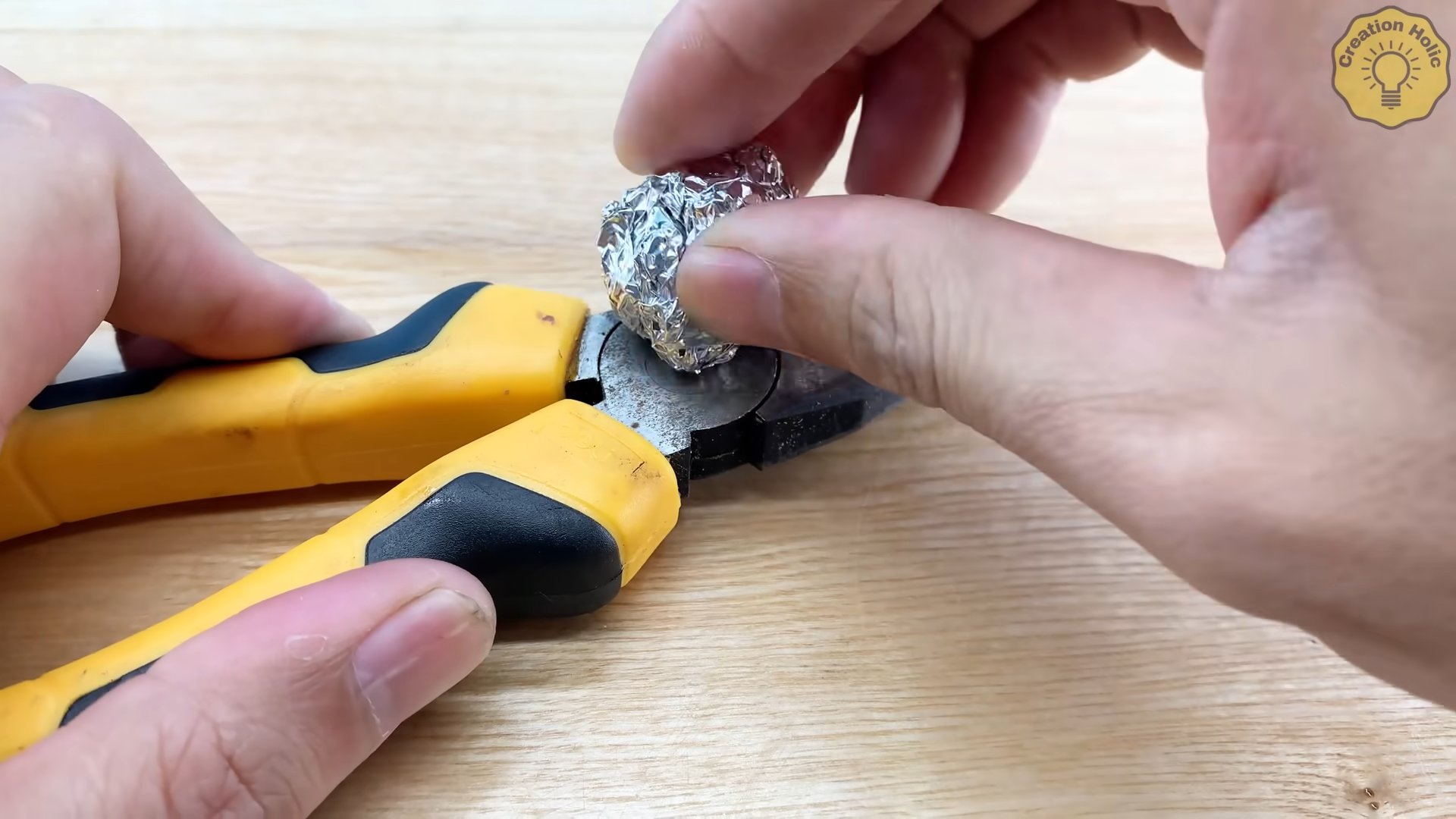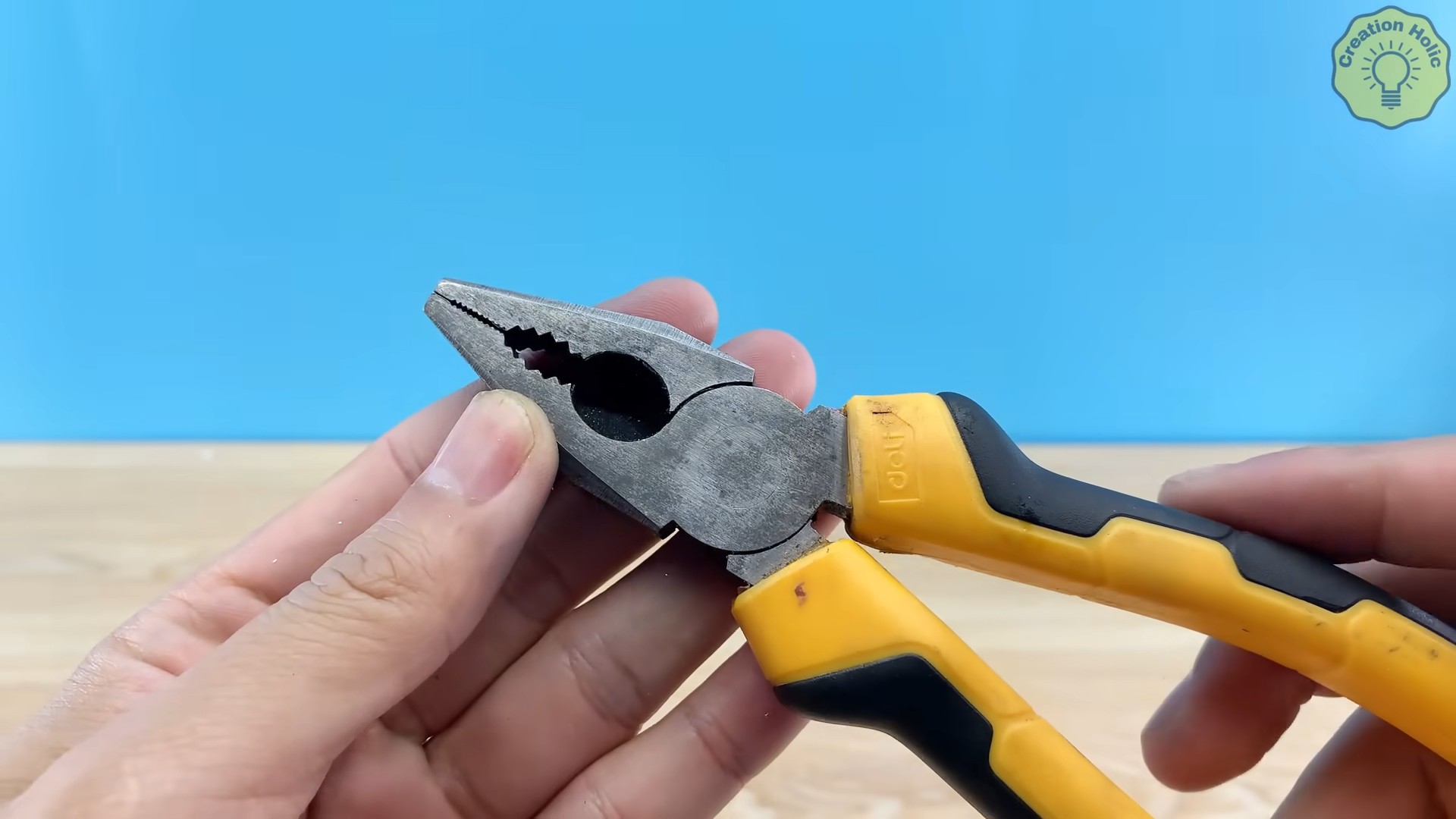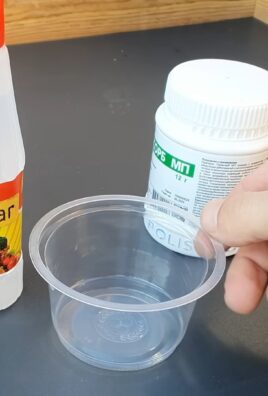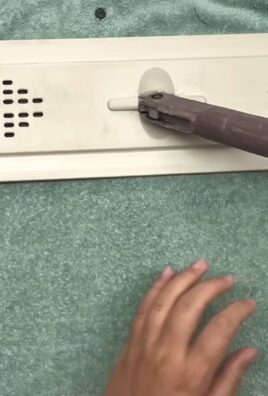Everyday life hacks – we all crave them, don’t we? Those little nuggets of wisdom that make our lives just a tad bit easier, more efficient, and dare I say, even a little bit magical. From decluttering our homes to streamlining our routines, these clever tricks can truly transform our daily experiences. But what if I told you that some of the most impactful life hacks can be found right outside your back door, or even on your windowsill?
For centuries, people have been finding ingenious ways to simplify tasks and improve their surroundings. Think about it – our ancestors didn’t have access to the endless stream of products and services we do today. They relied on resourcefulness and ingenuity to solve problems, often drawing inspiration from nature itself. This spirit of DIY and clever problem-solving is deeply ingrained in our history, and it’s something we can all tap into.
In today’s fast-paced world, we’re constantly bombarded with information and demands on our time. It’s no wonder we’re all looking for ways to simplify our lives and reclaim a sense of control. That’s where everyday life hacks come in. They offer practical solutions to common problems, helping us save time, money, and energy. And when these hacks are focused on our homes, the impact can be even greater. A well-organized and efficient home can reduce stress, improve our mood, and create a more welcoming and enjoyable living space. So, let’s dive into some amazing DIY tricks that will transform your home and make your life a whole lot easier!

DIY: Upcycling Old T-Shirts into Reusable Shopping Bags
Hey there, fellow DIY enthusiasts! Are you drowning in old t-shirts that are too worn to wear but too sentimental to toss? Well, I’ve got the perfect solution: turn them into super handy, eco-friendly reusable shopping bags! This project is not only a great way to reduce waste but also a fun and creative way to give your old tees a new life. Plus, you’ll save money on those pesky plastic bag fees at the grocery store. Let’s get started!
Materials You’ll Need
Before we dive in, let’s gather our supplies. You probably already have most of these lying around:
* An old t-shirt (preferably a sturdy cotton one – the bigger the shirt, the bigger the bag!)
* Sharp scissors or a rotary cutter
* A ruler or measuring tape
* A marker or fabric chalk
* Sewing machine (optional, but recommended for durability)
* Thread that matches your t-shirt (if sewing)
* Pins (if sewing)
* Iron and ironing board (optional, but helpful for crisp lines)
Choosing Your T-Shirt
The key to a successful t-shirt bag is choosing the right t-shirt. Here’s what I look for:
* Fabric: Cotton or a cotton blend is ideal. It’s strong, washable, and easy to work with. Avoid super thin or stretchy fabrics, as they won’t hold up well to heavy groceries.
* Size: The larger the t-shirt, the larger the bag. A men’s large or extra-large will give you a good-sized shopping bag.
* Design: Consider the design on the t-shirt. Do you want it to be the focal point of your bag? Or would you prefer a more subtle look? Keep in mind that the design will be upside down on the bottom of the bag.
* Condition: Check for any major holes or stains. Small imperfections can be worked around, but large ones might compromise the bag’s integrity.
Step-by-Step Instructions: No-Sew Method
If you don’t have a sewing machine or simply prefer a no-sew option, this method is for you! It’s quick, easy, and still creates a functional bag.
1. Prepare the T-Shirt: Lay your t-shirt flat on a clean surface. Smooth out any wrinkles. If you want, iron it for a neater finish.
2. Cut off the Sleeves: Using your scissors, carefully cut off both sleeves. Cut along the seam, or slightly inside the seam for a cleaner look. Try to make the cuts as straight as possible.
3. Widen the Neckline (Optional): If you want a wider opening for your bag, you can cut off the neckline. I usually cut a U-shape, starting just below the collar. Be careful not to cut too low, or your bag will be too open.
4. Create the Fringe Bottom: This is where the magic happens! Turn the t-shirt inside out. At the bottom of the shirt, cut strips that are about 3-4 inches long and 1 inch wide. Make sure you are cutting through both layers of the t-shirt. The more strips you cut, the stronger your bag will be.
5. Tie the Knots: Now, take two adjacent strips and tie them together in a tight knot. Repeat this process all the way across the bottom of the shirt.
6. Second Row of Knots: For extra security, tie a second row of knots. Take one strip from the first knot and one strip from the knot next to it, and tie them together. This will create a criss-cross pattern and reinforce the bottom of the bag.
7. Turn Right Side Out: Turn your bag right side out, and you’re done! You now have a reusable shopping bag made from an old t-shirt.
Step-by-Step Instructions: Sewing Method
For a more durable and professional-looking bag, I highly recommend using a sewing machine. It’s a bit more time-consuming, but the results are worth it!
1. Prepare the T-Shirt: Just like with the no-sew method, start by laying your t-shirt flat on a clean surface and smoothing out any wrinkles. Iron it if desired.
2. Cut off the Sleeves: Cut off both sleeves, following the same instructions as above.
3. Widen the Neckline (Optional): Widen the neckline if you prefer a wider opening.
4. Turn Inside Out: Turn the t-shirt inside out.
5. Pin the Bottom: Fold the bottom edge of the t-shirt up about 1/2 inch and press with an iron to create a clean fold. Then, fold it up again about 1 inch and pin it in place. This will create a double-folded hem for extra strength.
6. Sew the Bottom: Using your sewing machine, sew along the pinned hem. Use a straight stitch and backstitch at the beginning and end to secure the seam.
7. Reinforce the Handles (Optional): For added durability, you can reinforce the handles (where the sleeves used to be). Fold the raw edges of the armholes inward about 1/2 inch and press with an iron. Then, fold them in again about 1 inch and pin in place. Sew along the pinned edges, using a straight stitch and backstitching at the beginning and end.
8. Turn Right Side Out: Turn your bag right side out, and you’re ready to go shopping!
Adding Extra Touches
Want to personalize your t-shirt bag even more? Here are a few ideas:
* Pockets: Cut out pockets from another old t-shirt or fabric scrap and sew them onto the front of your bag.
* Appliques: Add appliques using fabric scraps, felt, or even old buttons.
* Fabric Paint: Use fabric paint to add designs, quotes, or your name to the bag.
* Embroidery: Embroider a design or your initials onto the bag for a unique touch.
* Tie Dye: Before cutting and sewing, tie dye the t-shirt for a vibrant and colorful bag.
Tips and Tricks
Here are a few extra tips to help you create the perfect t-shirt bag:
* Use a Sharp Blade: A sharp pair of scissors or a rotary cutter will make cleaner cuts and prevent fraying.
* Reinforce the Bottom: If you’re planning on carrying heavy items in your bag, consider adding an extra layer of fabric to the bottom for reinforcement. You can cut a piece of cardboard to fit inside the bottom of the bag for added support.
* Wash Your T-Shirt First: Wash and dry your t-shirt before starting the project to prevent shrinking later on.
* Practice on a Scrap: If you’re new to sewing, practice your stitches on a scrap piece of fabric before working on your bag.
* Have Fun!: Don’t be afraid to experiment and get creative! This is a fun and easy project, so enjoy the process.
Cleaning and Care
To keep your t-shirt bag looking its best, follow these cleaning and care tips:
* Machine Washable: Most t-shirt bags can be machine washed on a gentle cycle with cold water.
* Air Dry: Avoid putting your bag in the dryer, as it may shrink or damage the fabric. Hang it to air dry instead.
* Iron if Needed: If your bag gets wrinkled, you can iron it on a low setting.
* Spot Clean: For small stains, try spot cleaning with a mild detergent and a damp cloth.
Troubleshooting
Encountering problems? Here are some common issues and how to fix them:
* Fraying Edges: If the edges of your bag are fraying, you can use a seam sealant or fray check to prevent further fraying. You can also serge the edges for a more professional finish.
* Weak Bottom: If the bottom of your bag is weak, you can reinforce it by adding an extra layer of fabric or using a thicker fabric for the bottom panel.
* Uneven Cuts: If your cuts are uneven, don’t worry! You can always trim them up with scissors. Just try to be as precise as possible.
* Seams Coming Undone: If your seams are coming undone, you can reinforce them by sewing over them again. Make sure to backstitch at the beginning and end of the seam.
Why I Love This Project
I absolutely love this DIY project because it’s so versatile and eco-friendly. I’ve made dozens of these bags over the years, and I use them for everything from grocery shopping to carrying books to the library. It’s a great way to reduce my reliance on plastic bags and give my old t-shirts a new purpose.

Conclusion
So, there you have it! This simple yet incredibly effective DIY trick is more than just a clever shortcut; it’s a game-changer for anyone looking to simplify their everyday life. We’ve shown you how to transform a common household item into something extraordinary, saving you time, money, and a whole lot of frustration.
Why is this a must-try? Because it addresses a common problem with an elegant solution. It’s accessible to everyone, regardless of their DIY skills or budget. It’s sustainable, repurposing materials you likely already have on hand. And most importantly, it works! Imagine the satisfaction of knowing you’ve conquered a daily challenge with your own ingenuity.
But don’t stop there! This DIY trick is just the starting point. Get creative and experiment with variations. For example, if you’re using this trick for organizing cables, try color-coding them with different colored tape or labels for even easier identification. If you’re using it for cleaning, consider adding a few drops of essential oil for a pleasant scent. The possibilities are endless!
We’ve focused on the core concept of **everyday life hacks**, but remember that the spirit of innovation is all about adapting and improving. Think about how you can personalize this trick to better suit your specific needs and preferences. Maybe you can find a way to make it even more efficient, more durable, or more aesthetically pleasing.
Don’t be afraid to experiment with different materials and techniques. The beauty of DIY is that there are no hard and fast rules. The only limit is your imagination. And who knows, you might even discover a new and improved version of this trick that you can share with the world!
We are confident that once you try this DIY trick, you’ll wonder how you ever lived without it. It’s a small change that can make a big difference in your daily routine. It’s a testament to the power of simple solutions and the ingenuity of the human spirit.
So, what are you waiting for? Gather your materials, follow the steps, and prepare to be amazed. We encourage you to try this DIY trick today and experience the difference it can make. And most importantly, we want to hear about your experience! Share your photos, videos, and tips in the comments below. Let us know how you’ve adapted the trick to your own needs and what kind of results you’ve achieved. Together, we can create a community of DIY enthusiasts who are dedicated to making everyday life a little bit easier, one hack at a time.
We believe that sharing is caring, so please share this article with your friends and family who might benefit from this DIY trick. Let’s spread the word and help everyone simplify their lives.
Remember, the best **everyday life hacks** are the ones that are simple, effective, and accessible to everyone. This DIY trick embodies all of those qualities, making it a must-try for anyone who wants to live a more organized, efficient, and fulfilling life.
Frequently Asked Questions (FAQ)
Q: What if I don’t have the exact materials listed in the instructions?
A: Don’t worry! The beauty of DIY is that you can often substitute materials based on what you have available. The key is to understand the function of each material and find a suitable alternative. For example, if the instructions call for a specific type of adhesive, you can often use another type of adhesive that is appropriate for the materials you are working with. Just make sure that the substitute material is strong enough and durable enough for the intended purpose. When it comes to **everyday life hacks**, flexibility is key!
Q: I’m not very good at DIY projects. Is this trick easy enough for a beginner?
A: Absolutely! This DIY trick is designed to be simple and straightforward, even for beginners. The instructions are clear and concise, and the materials are readily available. If you’re feeling intimidated, start by practicing the steps on a scrap piece of material before you attempt the final project. And don’t be afraid to ask for help from a friend or family member who has more experience with DIY projects. Remember, everyone starts somewhere, and this is a great way to build your confidence and skills.
Q: How durable is this DIY trick? Will it last a long time?
A: The durability of this DIY trick will depend on the materials you use and how carefully you follow the instructions. If you use high-quality materials and take your time to do the project correctly, it should last for a reasonable amount of time. However, it’s important to remember that this is a DIY project, and it may not be as durable as a commercially manufactured product. To extend the lifespan of your DIY trick, avoid exposing it to extreme temperatures, moisture, or direct sunlight. And if you notice any signs of wear and tear, repair them promptly to prevent further damage.
Q: Can I use this DIY trick for other purposes besides the ones mentioned in the article?
A: Absolutely! We encourage you to get creative and explore other uses for this DIY trick. The possibilities are endless! Think about the underlying principles of the trick and how they can be applied to other situations. For example, if the trick involves creating a storage solution, you can adapt it to store other items besides the ones mentioned in the article. Or if the trick involves improving the functionality of an existing object, you can apply it to other objects that need improvement. The key is to think outside the box and experiment with different applications.
Q: I tried the DIY trick, but it didn’t work as well as I expected. What should I do?
A: Don’t give up! DIY projects often require some trial and error. If the trick didn’t work as well as you expected, try to identify the problem and make adjustments. Did you use the wrong materials? Did you follow the instructions correctly? Did you encounter any unexpected challenges? Once you’ve identified the problem, try to find a solution. You may need to experiment with different materials, techniques, or approaches. And don’t be afraid to ask for help from other DIY enthusiasts. They may have valuable insights and suggestions that can help you overcome the challenges. Remember, the key to success is persistence and a willingness to learn from your mistakes.
Q: How can I share my experience with this DIY trick with others?
A: We would love to hear about your experience with this DIY trick! You can share your photos, videos, and tips in the comments section below the article. You can also share your experience on social media using the hashtag #EverydayLifeHacks. We encourage you to be as detailed as possible in your description, including the materials you used, the steps you followed, and any challenges you encountered. Your feedback will help us improve the article and provide valuable insights to other DIY enthusiasts. And who knows, your experience might even inspire someone else to try this DIY trick!
Q: Are there any safety precautions I should take when doing this DIY trick?
A: Yes, safety should always be a top priority when doing any DIY project. Before you start, read the instructions carefully and make sure you understand all of the steps. Wear appropriate safety gear, such as gloves, goggles, and a dust mask, if necessary. Use tools and equipment safely and responsibly. And be aware of your surroundings to avoid accidents. If you’re working with sharp objects or power tools, take extra precautions to prevent injuries. And if you’re not comfortable with any of the steps, ask for help from someone who is more experienced. Remember, it’s always better to be safe than sorry.
Q: Where can I find more **everyday life hacks** like this one?
A: There are many resources available online and offline that offer a wealth of **everyday life hacks**. You can search for DIY blogs, websites, and forums that specialize in life hacks. You can also find books and magazines that offer tips and tricks for simplifying your life. And don’t forget to ask your friends and family for their favorite life hacks. They may have some valuable insights and suggestions that you haven’t considered. The key is to be curious and open to new ideas. And remember, the best life hacks are the ones that are simple, effective, and tailored to your specific needs and preferences.




Leave a Comment